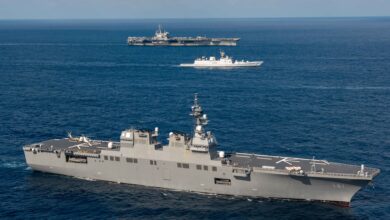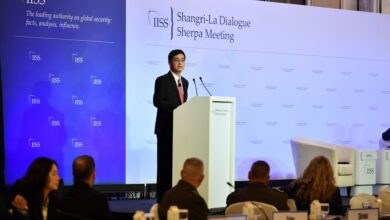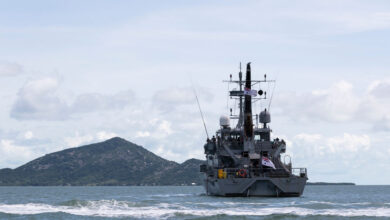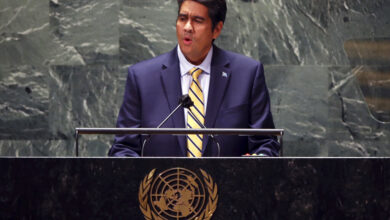U.S., India defense partnership focuses on emerging technologies

FORUM Staff
Defense collaboration between India and the United States soon could include joint projects to develop small unmanned aerial vehicles (UAVs) and lightweight small arms.
New UAV technology is one of many possible areas of collaboration discussed at the Defense Technology and Trade Initiative (DTTI) meeting held at the Pentagon on March 14, 2019, and at a media roundtable the next day.
The group meeting was co-chaired by Dr. Ajay Kumar, India’s secretary for defense production, and Ellen M. Lord, U.S. undersecretary of defense for acquisition and sustainment.
“Much of the discussion at this DTTI group meeting focused on encouraging U.S. and Indian industry to cooperatively develop next-generation technologies,” said a joint press statement on the DTTI meeting.
Lord identified small UAVs and lightweight small arms technology as collaborative projects now under consideration, according to India’s PTI news agency.
A technical planning document for the UAV project is being prepared by the U.S. Air Force Research Laboratory and India’s Defence Research and Development Organisation, PTI added. Using a mix of virtual and augmented reality technology to enhance aircraft maintenance also was discussed. (Pictured: A competitor prepares his unmanned aerial vehicle (UAV) at India’s Drone Olympics in February 2019 in Jakkur. Defense leaders in India and the U.S. want private industry to collaborate on new UAV technology.)
“It’s always good when there are new projects on the horizon,” Ben Schwartz, senior director for defense and aerospace at the U.S.-India Business Council (USIBC) told FORUM. “So, we’re encouraged by that.”
USIBC, which is a branch of the U.S. Chamber of Commerce, sponsored the March 2019 meetings.
Lord’s office identified DTTI as a “flexible mechanism” to ensure senior leaders from India and the U.S. stay alert to opportunities and challenges associated with the growing defense partnership.
DTTI group meetings are held twice a year, alternating between India and the U.S. Under DTTI, joint working groups focus on land, naval, air and aircraft carrier technologies. These groups report to co-chairs about ongoing activities and collaborative opportunities. Those opportunities include a number of projects targeted for completion within nine to 12 months, as well as longer-term projects.
“DTTI was set up in 2012 to address some of the bureaucratic challenges that existed between the two countries in defense and trade collaboration,” Schwartz said. The challenges DTTI addressed typically involved the U.S. systems of export control and technology transfer, and India’s acquisition system, Schwartz explained. “But over time, the objective shifted away from some of the technical procedural issues to focus more on trying to promote co-production and co-development.”
The U.S. declared India a major defense partner under the National Defense Authorization Act in 2017, which has “given an impetus to the DTTI,” reported India’s Ministry of Defence after a DTTI meeting in February 2018.
What began as collaboration between government defense laboratories has veered more toward private sector defense firms, Schwartz emphasized.
“The government of Prime Minister [Narendra] Modi has been very public in asserting the importance of private defense industry production in India,” he said, which benefits the countries’ collaborative relationship because private companies form the bedrock of the U.S. defense industry.
Ongoing discussions such as those facilitated by DTTI and USIBC have fostered a climate of collaboration that is cultivating bilateral defense projects of a larger scale than previously seen. The projects involve fighter aircraft and aircraft carriers.
“We’re hoping to see some big projects in addition to these small ones,” Schwartz said. “There’s revenue for the American companies, but there’s also manufacturing opportunities for the Indian companies.”




